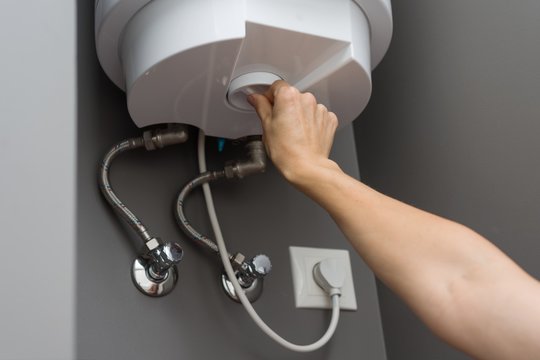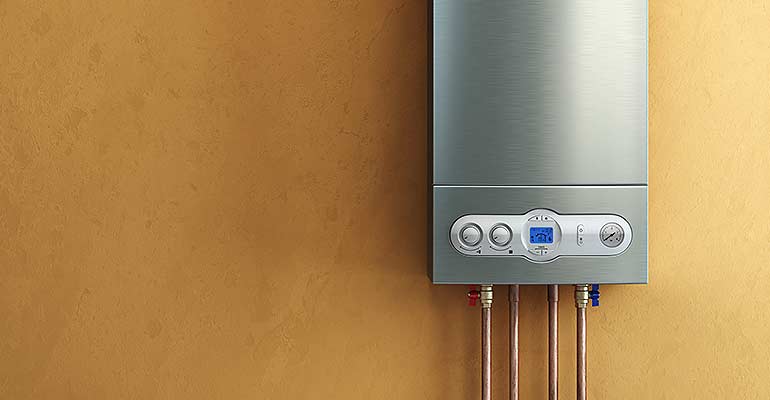Caring for Your Home's Hot Water System: Key TipsTips on How to Keep Your Home's Hot Water System in Good Condition
Caring for Your Home's Hot Water System: Key TipsTips on How to Keep Your Home's Hot Water System in Good Condition
Blog Article
This great article directly below pertaining to How to Maintain Your Water Heater & Prolong its Life is absolutely interesting. Give it a try and make your own ideas.

Hot water is important for daily comfort, whether it's for a refreshing shower or cleaning recipes. To guarantee your warm water system runs successfully and lasts longer, regular upkeep is crucial. This short article provides practical pointers and insights on exactly how to maintain your home's warm water system to stay clear of disturbances and pricey repair services.
Intro
Preserving your home's hot water system might seem daunting, yet with a couple of easy actions, you can guarantee it runs smoothly for many years to come. This overview covers every little thing from recognizing your hot water system to DIY upkeep ideas and understanding when to call in specialist assistance.
Importance of Keeping Your Warm Water System
Routine maintenance not just expands the life expectancy of your hot water system but additionally guarantees it runs efficiently. Neglecting maintenance can lead to lowered efficiency, higher energy costs, and also premature failure of the system.
Signs Your Hot Water System Needs Upkeep
Understanding when your hot water system needs attention can protect against major concerns. Watch out for signs such as irregular water temperature level, unusual sounds from the heating unit, or rusty water.
Recognizing Your Hot Water System
Prior to diving right into maintenance jobs, it's useful to understand the fundamental components of your warm water system. Usually, this includes the hot water heater itself, pipes, anode poles, and temperature controls.
Month-to-month Maintenance Tasks
Normal regular monthly checks can aid catch small problems prior to they intensify.
Purging the Water Heater
Purging your water heater gets rid of sediment build-up, enhancing performance and extending its life.
Monitoring and Replacing Anode Rods
Anode poles prevent rust inside the tank. Checking and replacing them when worn is critical.
Examining and Readjusting Temperature Setups
Adjusting the temperature setups guarantees ideal efficiency and security.
Do It Yourself Tips for Maintenance
You can do numerous maintenance jobs on your own to keep your hot water system in top problem.
Checking for Leaks
On a regular basis evaluate pipes and links for leakages, as these can lead to water damage and higher costs.
Testing Pressure Alleviation Valves
Examining the pressure relief valve guarantees it operates correctly and avoids too much stress buildup.
Protecting Pipelines
Shielding hot water pipes minimizes warmth loss and can save energy.
When to Call an Expert
While do it yourself upkeep is beneficial, some problems need specialist expertise.
Complex Issues Needing Expert Assistance
Instances consist of significant leaks, electrical problems, or if your water heater is constantly underperforming.
Regular Specialist Upkeep Benefits
Professional maintenance can include extensive assessments, tune-ups, and making sure compliance with safety and security standards.
Conclusion
Normal upkeep of your home's warm water system is essential for effectiveness, long life, and price financial savings. By adhering to these suggestions and knowing when to seek professional help, you can ensure a dependable supply of hot water without unexpected disruptions.
Water Heater Maintenance: The Basics
Maintaining your water heater will ensure it operates efficiently and has a longer lifespan. Neglecting regular maintenance can lead to costly repairs and an even bigger chunk of your savings if you have to replace it sooner than necessary. But there’s good news: Most water heater maintenance tasks are relatively simple and easy for homeowners with basic DIY skills.
Flush the Water Heater
Over time, sediment and minerals can build up in the tank, reducing its efficiency and potentially causing damage. To flush the tank, turn off the power or gas supply, attach a hose to the drain valve near the bottom and open the valve to drain the water until it runs clear. Ideally, flush the tank annually.
Replace the Anode Rod
The anode rod is a sacrificial metal rod that helps prevent corrosion inside the tank. Inspect and replace it every three to five years or per the manufacturer's recommendation. To replace the anode rod, turn off the power or gas supply, drain a few gallons of water from the tank, unscrew the old rod and replace it with a new one. If the anode rod is significantly corroded or covered in calcium buildup, it's a sign the water heater may need to be replaced soon.
Tune-Up
A yearly tune-up can help identify potential issues and ensure your water heater operates at peak efficiency. This typically involves checking the thermostat, burner assembly (for gas heaters) and any other components specified by the manufacturer. During a tune-up, the technician may also clean the burner and adjust the pilot light (for gas heaters) or examine the heating elements (for electric heaters).
How to Maintain Your Water Heater
Insulate the tank. Insulating the tank can improve energy efficiency and reduce heat loss, saving you money on energy bills. You can purchase precut insulation blankets designed specifically for water heaters or use standard fiberglass insulation wrapped securely around the tank. Check the temperature. The recommended water temperature for most households is around 120 degrees Fahrenheit (49 degrees Celsius). Higher temperatures can increase energy costs and potentially cause scalding. Use a kitchen thermometer to check the temperature at the faucet nearest the water heater. Monitor water pressure. Excessive water pressure can strain the water heater and cause leaks or even tank failure. Install a pressure-reducing valve if necessary. The ideal water pressure range is between 60 and 70 PSI (pounds per square inch). Test the temperature and pressure (T&P) relief valve. The T&P relief valve is a safety feature that releases pressure if the tank gets too hot or the pressure builds up too high. Test it annually by lifting the lever and allowing a small amount of water to release. Replace the valve if it doesn't release water or reseal properly. Check for leaks. Regularly inspect the tank, pipes and fittings for leaks or corrosion. Deal with issues promptly to prevent further damage. Even a small leak can lead to significant water damage over time. Consider a tankless water heater. If your traditional tank-style water heater is nearing the end of its lifespan ( typically 10 years), consider replacing it with a tankless water heater. These units heat water on demand, reducing standby energy losses and potentially saving you money on your energy bills. Schedule professional maintenance. While homeowners can perform many water heater maintenance tasks, it's still a good idea to schedule professional maintenance every few years. A plumber or HVAC technician can thoroughly inspect the unit, identify potential issues and ensure it operates safely and efficiently. https://www.homeserve.com/en-us/blog/home-improvement/hot-water-heater-maintanence/

We had been shown that article on Water Heater Maintenance Tips You Can't Afford to Forget through someone on our other website. Enjoyed reading our article? Please share it. Help somebody else discover it. Bless you for being here. Don't hesitate to visit our site back soon.
Additional Information Report this page